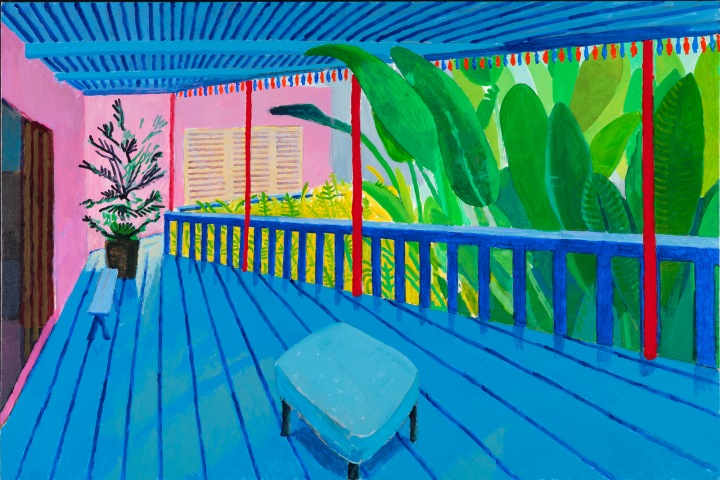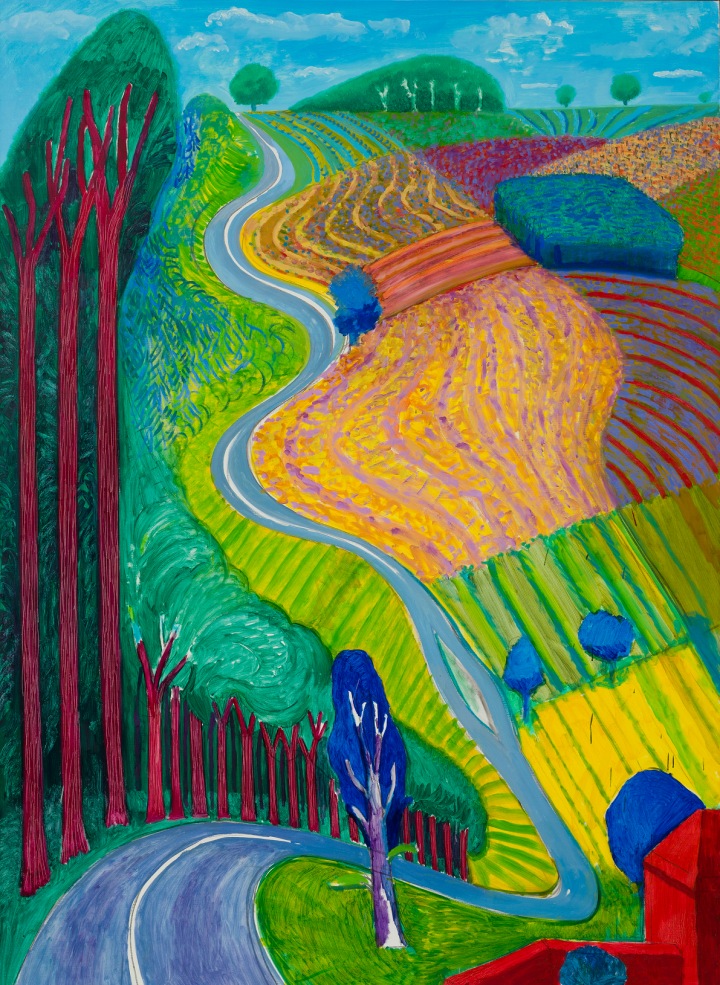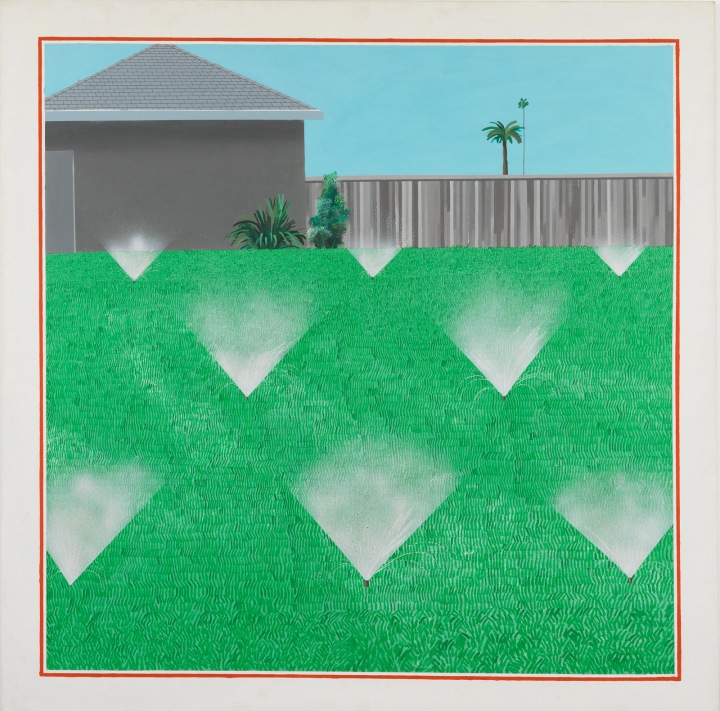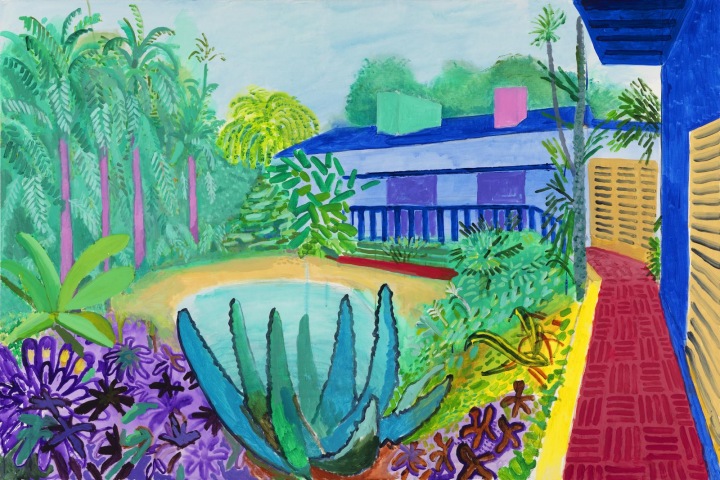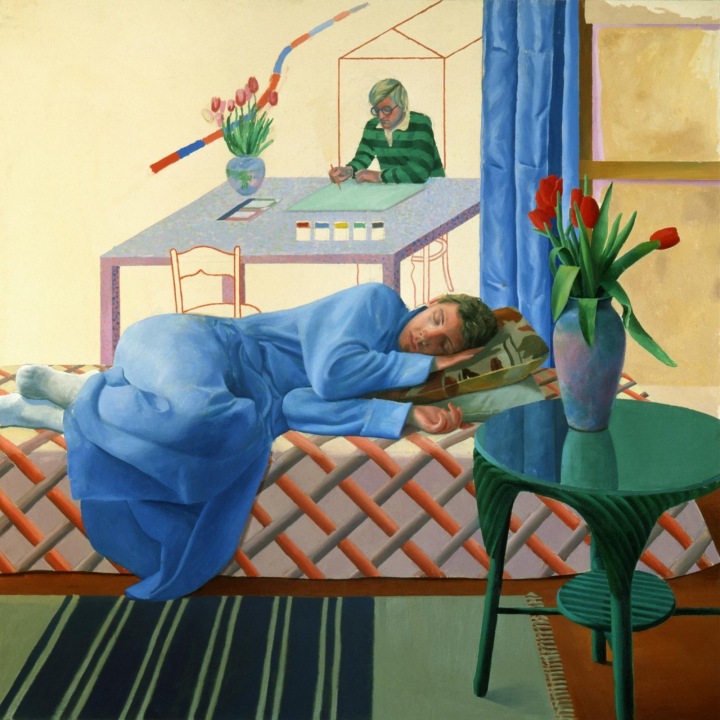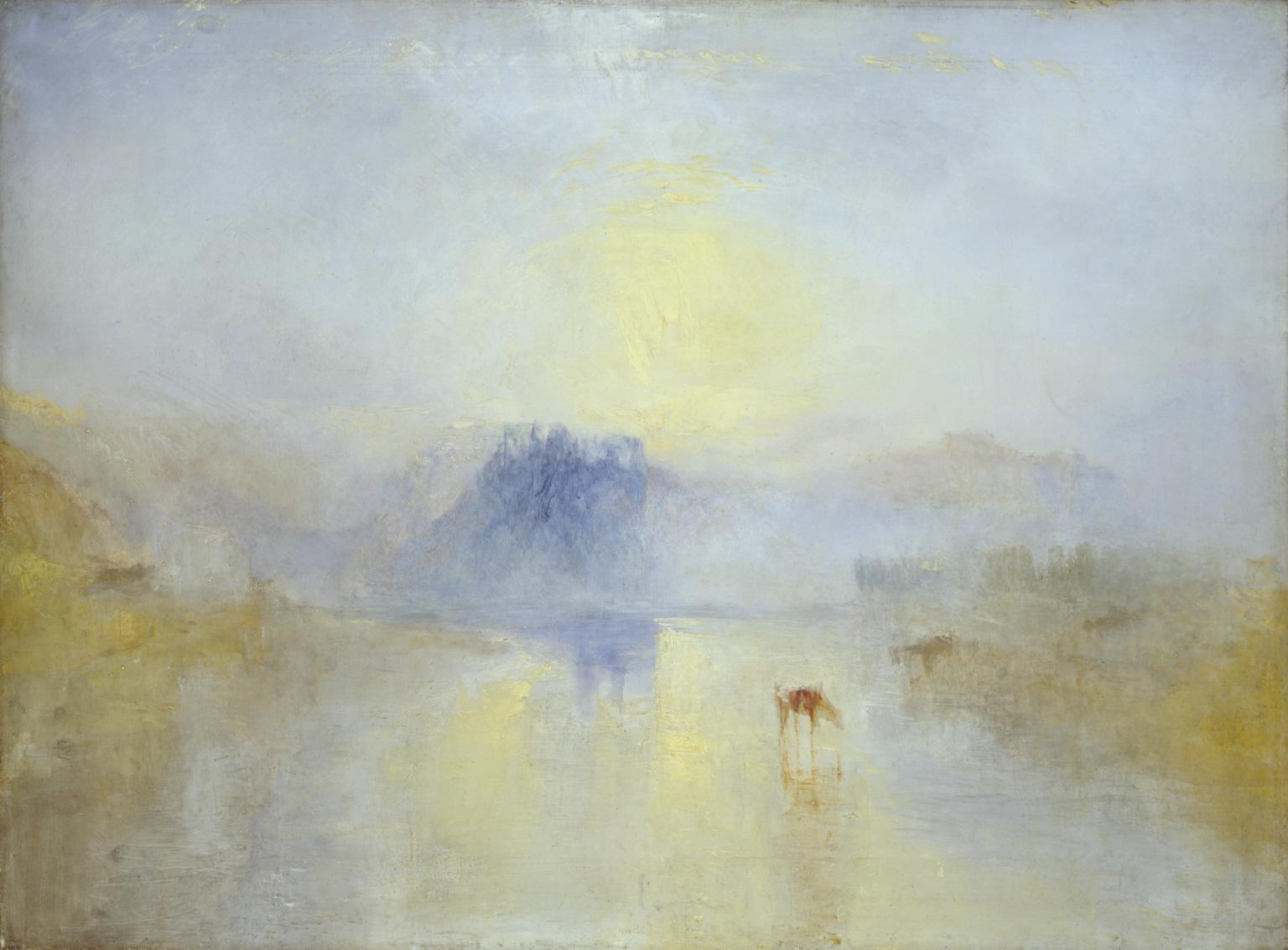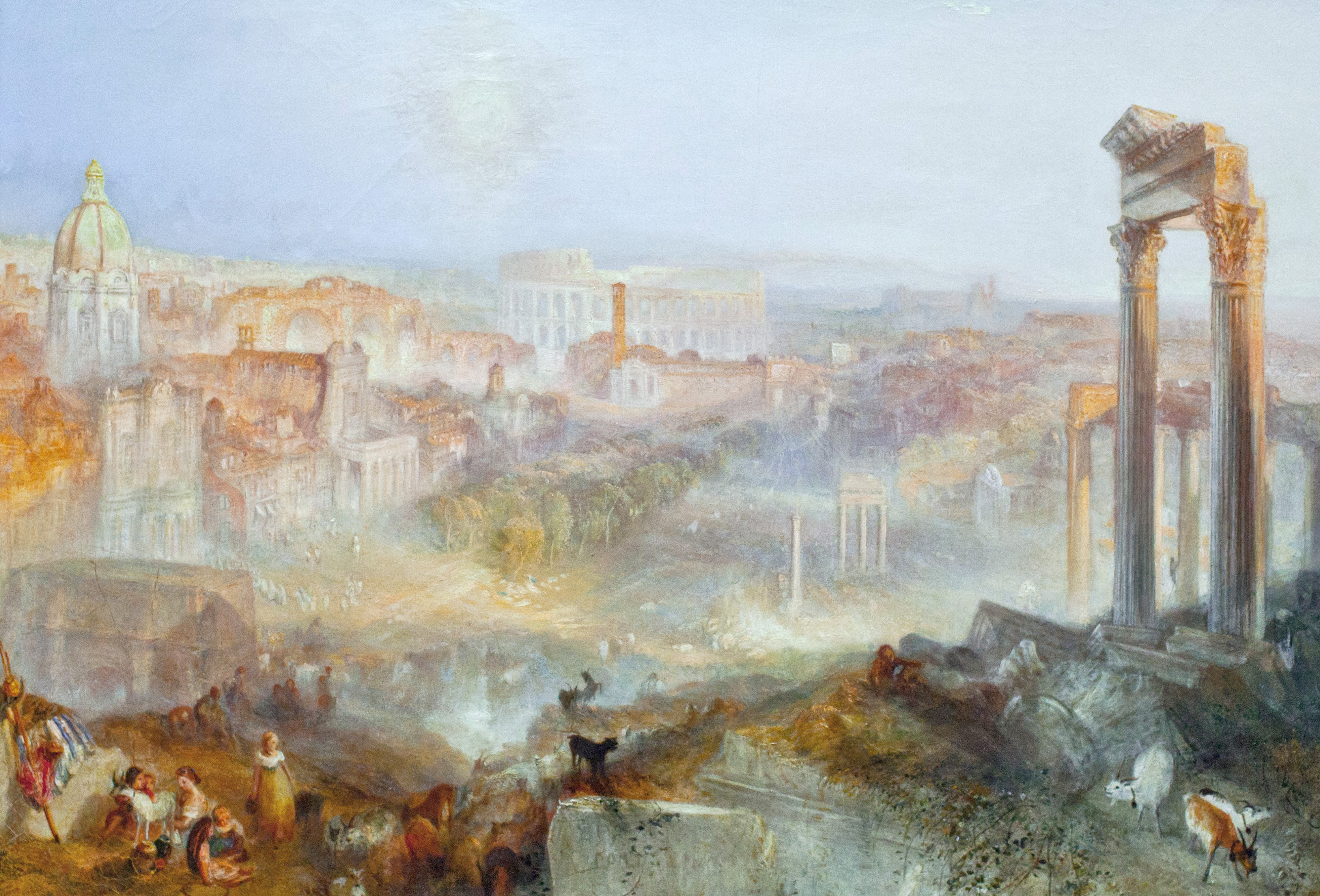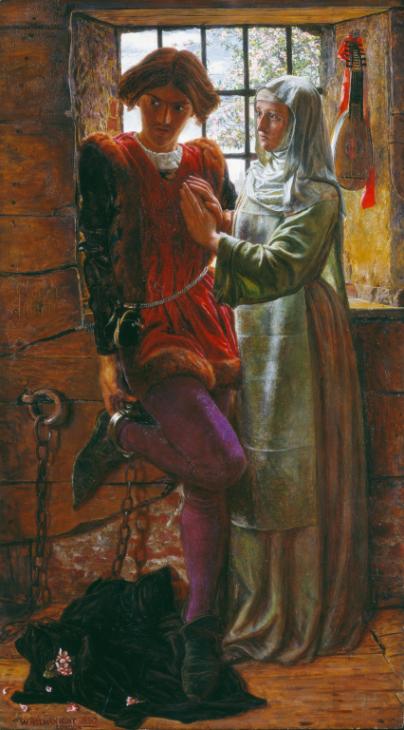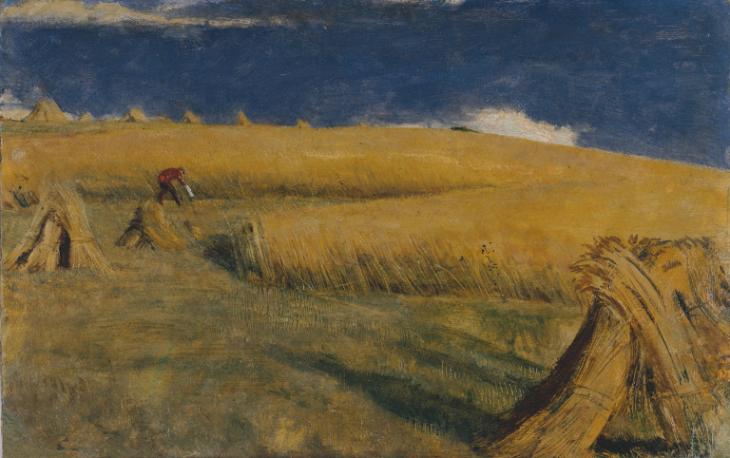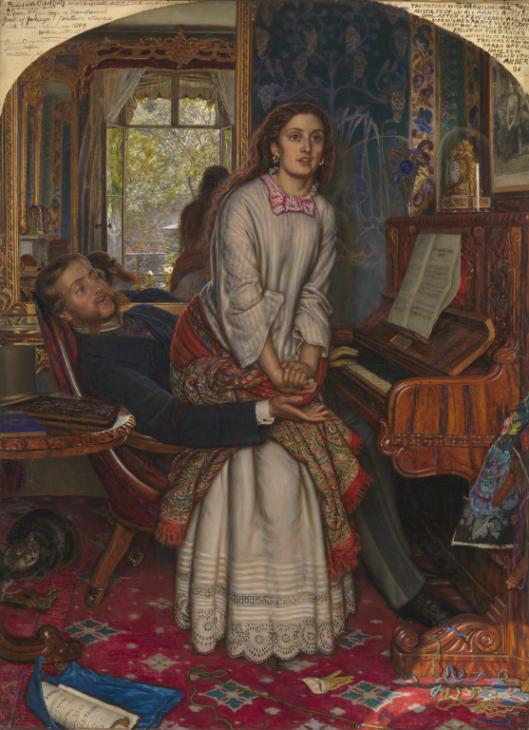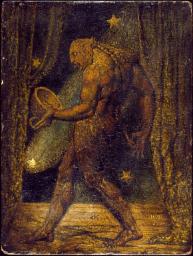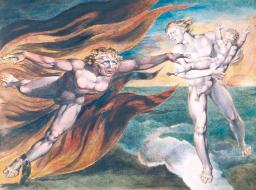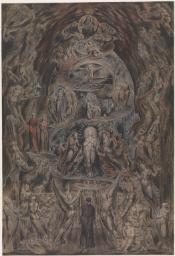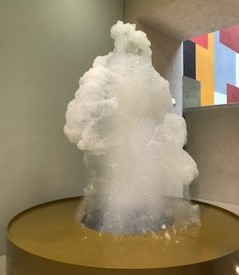Difference between revisions of "Tate Britain"
From Londonhua WIKI
Cmtillotson (talk | contribs) |
Cmtillotson (talk | contribs) |
||
| Line 131: | Line 131: | ||
===Cloud Canyons No. 3: An Ensemble of Bubble Machines=== | ===Cloud Canyons No. 3: An Ensemble of Bubble Machines=== | ||
<br> | <br> | ||
| − | This is a ever changing sculpture where a central bubble machine creates a large morphing foam mass. It was created by David Medalla who drew inspiration from different foam formations from around the globe. He wanted a sculpture that would illustrate the tangible effect of invisible forces | + | [[File:Bubble (2).jpg|thumb]]This is a ever changing sculpture where a central bubble machine creates a large morphing foam mass. It was created by David Medalla who drew inspiration from different foam formations from around the globe. He wanted a sculpture that would illustrate the tangible effect of invisible forces |
| − | + | ||
| − | <br><br> | + | <br><br><br> |
=References= | =References= | ||
Revision as of 13:09, 17 May 2017
Tate Britain
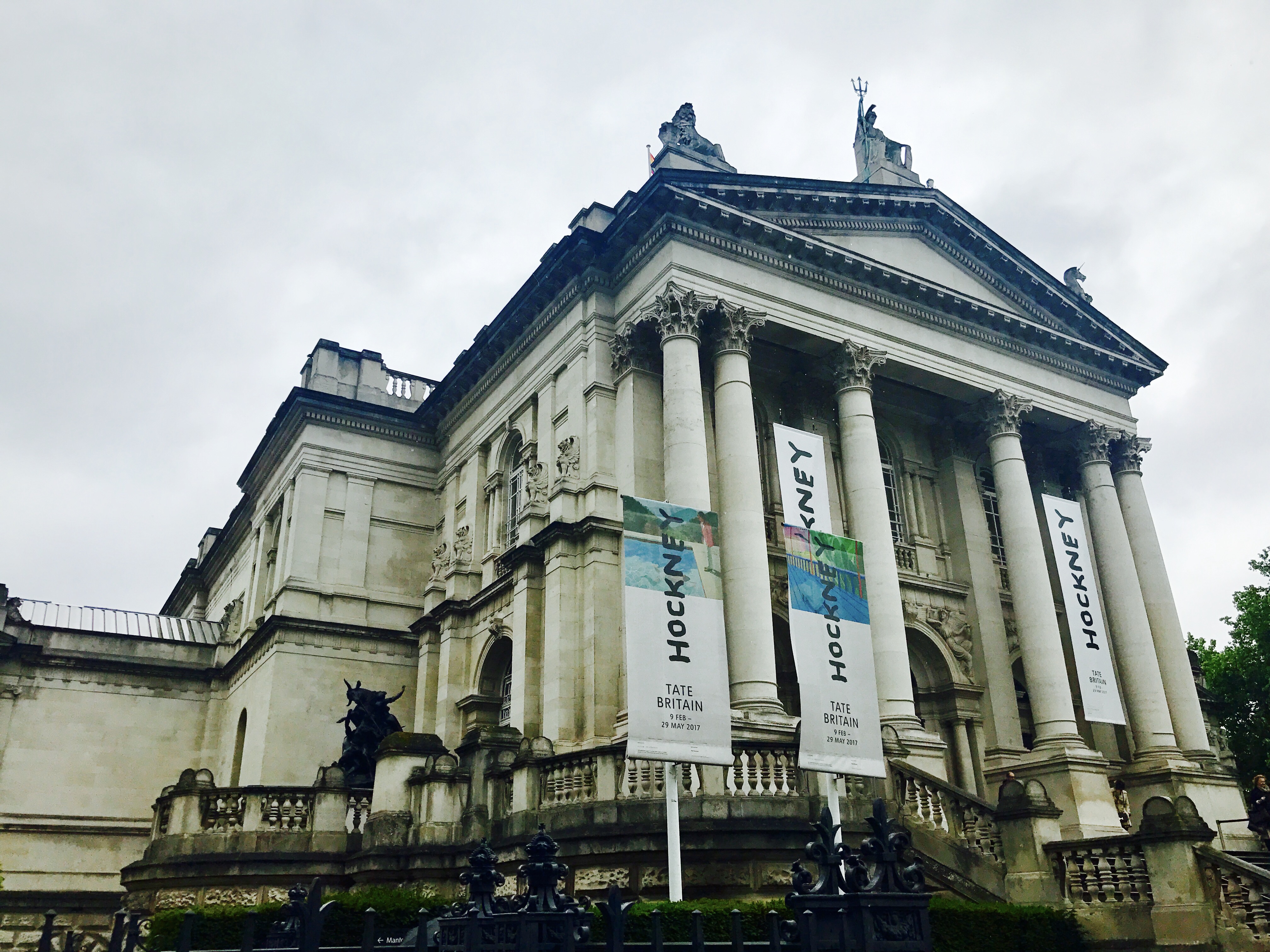 photo by: Sofia Reyes | |
| Director | Alex Farquharson |
|---|---|
| Established | 1897 |
| Location | Millbank, London SW1, UK |
Overview
Tate Britain is one of the four Tate Galleries. It was founded by Sir Henry Tate. It is the second best place to observed British Art, the first being the The National Gallery.
Contents
Background or Origin of Article
Begin writing the background information of this article, or use this format to begin a new article with some other relevant section filled with important information.
Displays
The main display spaces show the permanent collection of historic British art, as well as contemporary work. However, they also host different exhibits.
Summer 2017 Exhibits
Queer British Art 1861–1967
Featuring works from 1861–1967 relating to lesbian, gay, bisexual, trans and queer (LGBTQ) identities, the show marks the 50th anniversary of the partial decriminalisation of male homosexuality in England. Queer British Art explores how artists expressed themselves in a time when established assumptions about gender and sexuality were being questioned and transformed.
Deeply personal and intimate works are presented alongside pieces aimed at a wider public, which helped to forge a sense of community when modern terminology of ‘lesbian’, ‘gay’, ‘bisexual’ and ‘trans’ were unrecognised. Together, they reveal a remarkable range of identities and stories, from the playful to the political and from the erotic to the domestic.
With paintings, drawings, personal photographs and film from artists such as John Singer Sargent, Dora Carrington, Duncan Grant and David Hockney the diversity of queer British art is celebrated as never before.
Organize each section of this article so that it has a logical flow. If you intend to discuss one aspect of the origin of a person, place, thing, or idea, identify the appropriate existing section of the article, or create that section if it doesn't exist. Then, make a clear subheading. If you notice that some other information is not organized clearly, rearrange the information, but do so cautiously and responsibly! The goal here is clarity for the reader.
David Hockney
"One of the most popular and influential British artists of the twentieth century returns to Tate Britain for his most comprehensive exhibition yet"[1] Mr. Hockney is a renown artist that in the last sixty years has had various accomplishments in painting, drawing, print, photography and video. With almost eighty years old, he brings to Tate Britain an exposition that, according to him, he had never shown to the public before. What makes his work so outstanding from other contemporary artists is his flexibility and ability to adapt to the use of new technologies and applications to create his art. He changes his style and ways of working to appeal to the different audiences and he expresses it freely "I live in the now", he says. "Time is elastic, and I play with that idea" he also said in a promotional video for this exposition in Tate Britain.
In this exposition, available until May 2017, he shows his portraits and images of Los Angeles swimming pools, through to his drawings and photography, Yorkshire landscapes and most recent paintings. This exhibition shows how the roots of each new direction lay in the work that came before. It is describe by Tate as a "once-in-a-lifetime chance to see these unforgettable works together".
Cerith Wyn Evans
|
150px Gary Hume Cerith 1998 |
The artist Cerith Wyn Evans is a Welsh painter born in 1958. His is noted for his unique and diverse range of artwork that ranged from sculpture, to film and art. He focused on the communication of ideas, which have been exemplified through most of his artwork. The fact that he designs in many different mediums allows his creativity to not be bounded by paint or video or sculpture. He is often known to do collaborations with well-known artists such as Yoko Ono. Wyn Evans has also been known to do many commissions such as the one currently at the Tate called Forms in Space…by Light (in Time).
Forms in Space…by Light (in Time)
Forms in Space…by Light (in Time) was created In order to exemplify how energy can flow through empty space. This was done by the suspending almost 2 km of neon light from the ceiling to create abstract shapes. It give the art the feeling of suspension and movement. The idea originally came from the movements of the Japanese Noh Theater.
Permanent Exhibits
1780s
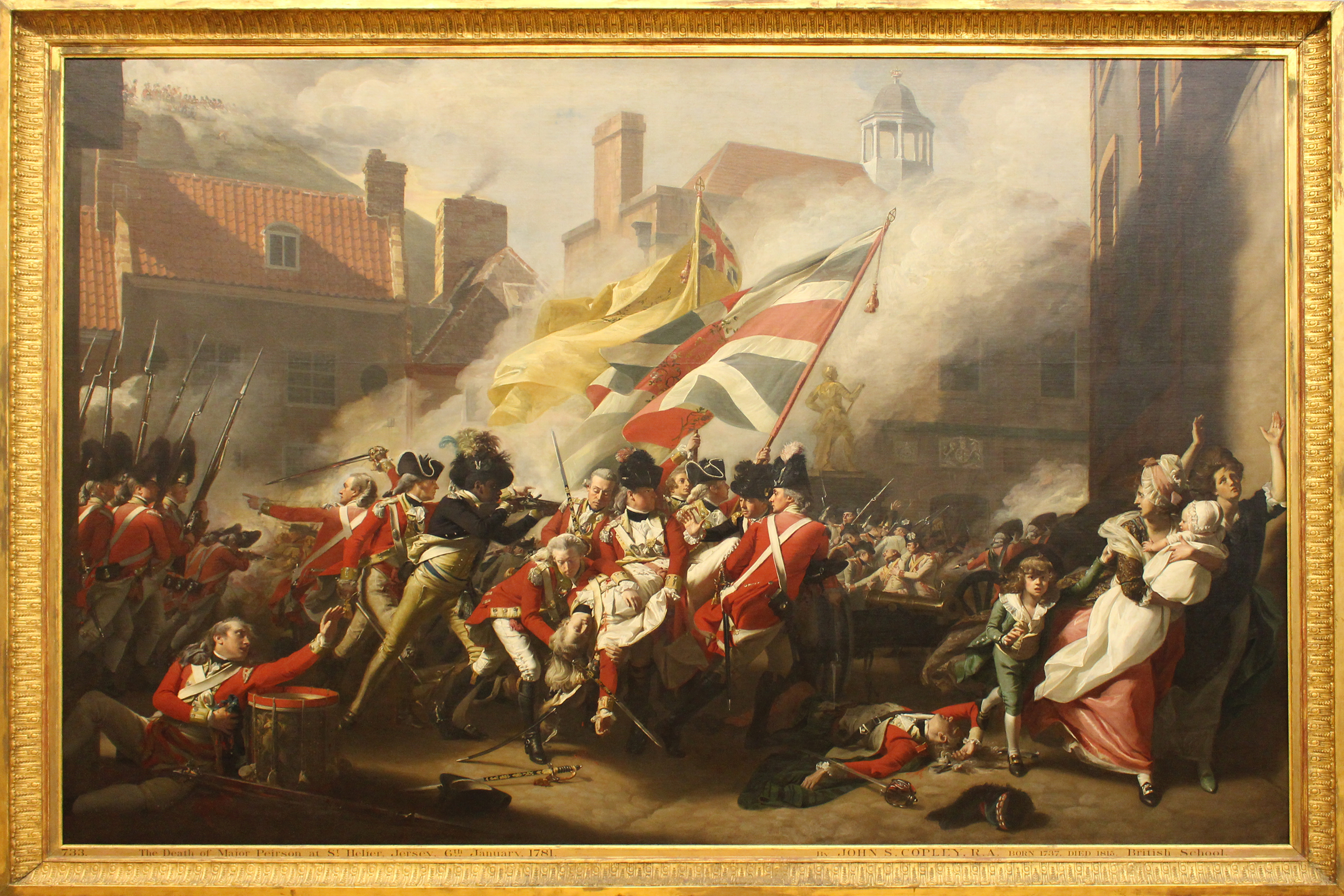 by John Singleton Copley |
John Singleton Copley
This piece was painted by John Singleton Copley. It shows the Battle of Jersey, where, in 1781, a French force invaded the island in an attempt to take it from the British. After the fall of the island’s capital, the governor was captured and agreed to a surrender to the French. However, the young Major Peirson fought off the French, and as the British were winning, he was shot by a French sniper. As shown in the painting, Peirson’s black servant avenged his master by killing the sniper. This painting shows Peirson dying in the battle, but in reality he died before the battle. This battle turned Peirson into a British hero, and therefore the painting was extremely popular when it was released.
1800s
 by Joseph Mallord William Turner |
Turner Collection
Joseph Mallord William Turner (1775–1851) was a master of painting history, landscape and marine painting. His largest collection of art can be found at Tate Britain. He is know as the father of modern art since he was unlike artists at his time. He is is the most celebrated painter in England. [2] Pictured are some of his works that are displayed in Tate Britain.
1850's
William Holman Hunt
William Holman Hunt was the founder of the Pre-Raphaelite Brotherhood, a group dedicated to creating quality ans sympathetic art, the expression of genuine ideas, and the study of nature, Hunt created his art following these principles. Currently on display in the 1850's room are four of his pieces Our English Coasts, 1852 ('Strayed Sheep'), Cornfield at Ewell, The Awakening Conscience, and Claudio and Isabella. The first two pieces are landscapes of the English countryside following one of the Brotherhood's main principles about painting and studying nature. The later two pieces are portraits that have two differing messages, but similar themes. In The Awakening Conscience, a man is portrayed with his mistress and evokes symbolism of innocence lost and plight of women. In his other portrait, Claudio and Isabella, Isabella stands in white as a symbol of purity where as Claudio stands in the dark as a foil to Isabella.
William Blake
William Blake was an English poet, artist and print maker who was born and lived in London, England. Blake focuses most of his art on the creation and discovery which is exhibited in his eight works that are currently being displayed in the William Blake room on the upper level of the museum. The Oberon, Titania and Puck with Fairies Dancing focus on the last scene of William Shakespeare's A Midsummer Night's Dream where Titania is instructing her fairy train. Newton displays the scientist only looking at the scientific knowledge instead of the colourful rocks. representing creativity behind him. There is also The Ghost of a Flea, Elohim Creating Adam, The Good and Evil Angels, Pity, Nebuchadnezzar, and Epitome of James Hervey's 'Meditstions among the Tombs'.
1850-1900
Paule Vézelay
Claimed
Video Art
Tate Britain offers three video art displays available to the public. "Together" by Lucy Beech and Edward Thomasson was designed to be therapeutic. The goal is to experience unspoken emotions and conflict in a safe environment. To do so, performers act out violent scenes in a dance to instrumental Katy Perry music. This creates an interesting contrast where the performers are smiling while pretending to beat each other up to cheery music. "Blue" by Derek Jarman is a blue screen accompanied by music and spoken words. It was inspired by artist Yves Klein whose blue paintings Jarman saw at Tate Gallery. For Jarman the blue represents "the admirable austerity of the void". "Dream English Kid" by Mark Leckey is a series of impressions. The video will focus on key familiar sounds and sights, often zooming in on them. Leckey was inspired by a YouTube video that made him realize how most of our memories can be found online. The video captures common sights and sounds from everyday life and dramatizes them. It seeks to connect viewers through common sensory experiences.
Auto Creative Art
Cloud Canyons No. 3: An Ensemble of Bubble Machines
This is a ever changing sculpture where a central bubble machine creates a large morphing foam mass. It was created by David Medalla who drew inspiration from different foam formations from around the globe. He wanted a sculpture that would illustrate the tangible effect of invisible forces
References
- ↑ T. (n.d.). David Hockney - Exhibition at Tate Britain. Retrieved May 16, 2017, from http://www.tate.org.uk/whats-on/tate-britain/exhibition/david-hockney
- ↑ T. (n.d.). Turner Collection at Tate Britain. Retrieved May 16, 2017, from http://www.tate.org.uk/visit/tate-britain/display/turner-collection
External Links
If appropriate, add an external links section
Image Gallery
If appropriate, add an image gallery
